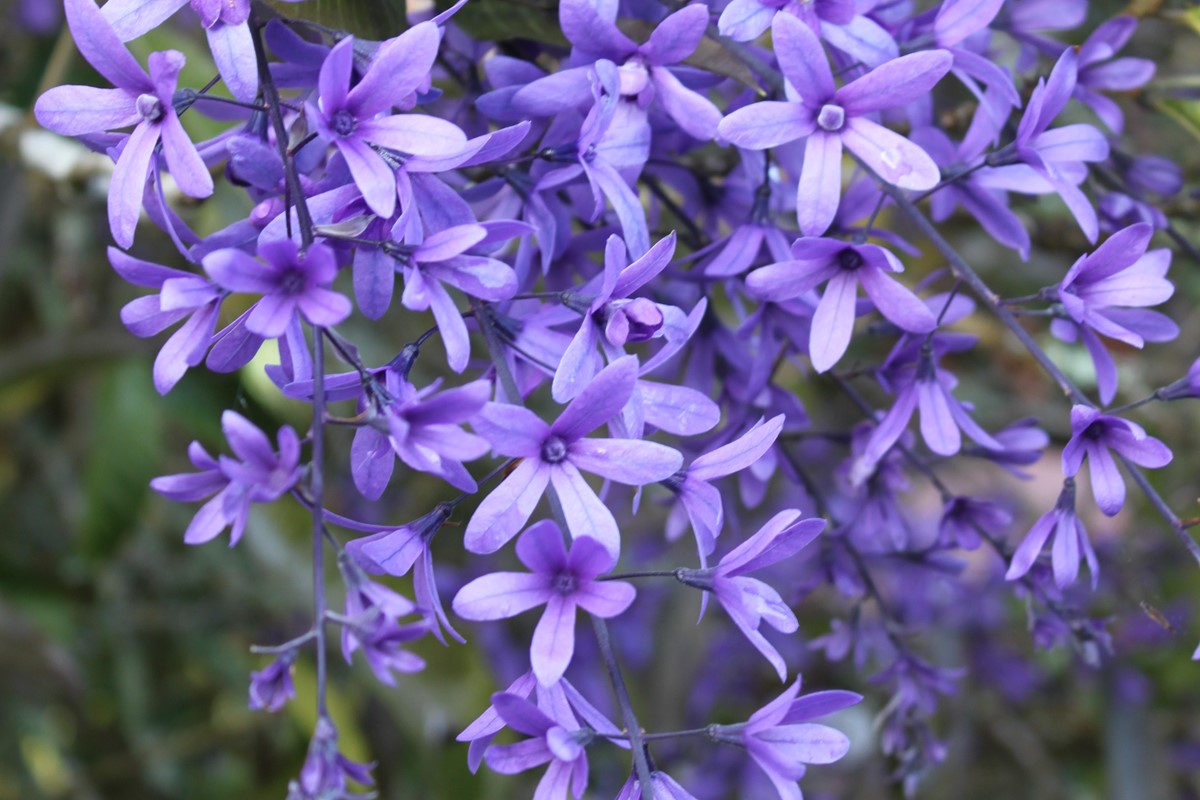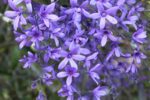Petrea, also known as Queen’s Wreath, Sandpaper Vine, or Purple Wreath, is a stunning flowering plant belonging to the Verbenaceae family. Known for its beautiful, cascading clusters of vibrant purple-blue flowers, Petrea is a favorite among gardeners and landscapers for its ornamental value.
Botanical Information
- Scientific Name: Petrea volubilis
- Common Names: Queen’s Wreath, Sandpaper Vine, Purple Wreath, Bluebird Vine
- Family: Verbenaceae
Plant Characteristics
- Growth Habit: Petrea is a vigorous, evergreen vine that can climb or trail, reaching heights of up to 30 feet (9 meters).
- Leaves: The leaves are rough-textured and feel like sandpaper, hence the name Sandpaper Vine. They are typically dark green, oval to oblong, and can grow up to 6 inches (15 cm) long.
- Flowers: The star-shaped flowers are borne in long, drooping racemes, often up to 1 foot (30 cm) in length. The flowers are typically purple-blue, but some varieties may have white blooms. The actual flowers are small, with the showy calyxes giving the appearance of larger blooms.
- Blooming Season: Petrea flowers profusely in late winter to early spring, with sporadic blooming throughout the year in suitable climates.
Growing Conditions
- Climate: Petrea thrives in tropical and subtropical climates. It is hardy in USDA zones 9-11.
- Sunlight: Requires full sun to partial shade for optimal growth and blooming.
- Soil: Prefers well-drained, fertile soils. It can tolerate a range of soil types, including sandy and loamy soils.
- Water: Regular watering is necessary, especially during dry periods. However, it is relatively drought-tolerant once established.
- Pruning: Pruning after flowering can help maintain shape and encourage bushier growth.
Benefits and Uses
- Ornamental Value: Petrea is primarily grown for its stunning floral displays, making it a popular choice for arbors, pergolas, trellises, and fences. The cascading flower clusters add a touch of elegance to any landscape.
- Wildlife Attraction: The flowers attract butterflies, bees, and other pollinators, enhancing the biodiversity of your garden.
- Cut Flowers: Petrea blooms are long-lasting and can be used in floral arrangements.
Care Tips
- Support: Provide sturdy support structures for the vine to climb, such as trellises or arbors.
- Fertilization: Regular feeding with a balanced fertilizer during the growing season will promote healthy growth and abundant flowering.
- Pest and Disease Management: Petrea is relatively pest-resistant but can occasionally be affected by common garden pests like aphids and spider mites. Regular monitoring and appropriate treatments can help keep the plant healthy.
Petrea, with its spectacular purple-blue blooms and robust growth habit, is a magnificent addition to any garden. Whether used as a decorative climber or a trailing ground cover, it brings vibrant color and life to outdoor spaces. Enjoy the beauty and charm of Petrea flowers by incorporating them into your landscape design.





















Reviews
There are no reviews yet.